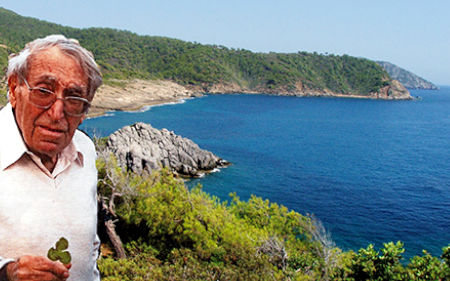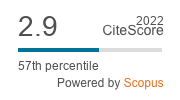Transdisciplinary challenges for sustainable management of mediterranean landscapes in the global information society
DOI:
https://doi.org/10.3097/LO.200914Keywords:
Chaotic ecological and socio-economic transformation, Fire and fuel management, Homeorhetic flow equilibrium, Mediterranean uplands conservation and restoration, Sustainability revolutionAbstract
The present chaotic transformation from the industrial to the global information society is accelerating the ecological, social and economic unsustainability. The rapidly growing unsustainable, fossil energy powered urbanindustrial technosphere and their detrimental impacts on nature and human well-being are threatening the solar energy powered natural and seminatural biosphere landscapes and their vital ecosystem services. A sustainability revolution is therefore urgently needed, requiring a shift from the "fossil age" to the "solar age" of a new world economy, coupled with more sustainable lifestyles and consumption patterns. The sustainable future of viable multifunctional biosphere landscapes of the Mediterranean Region and elsewhere and their biological and cultural richness can only be ensured by a post-industrial symbiosis between nature and human society. For this purpose a mindset shift of scientists and professionals from narrow disciplinarity to transdisciplinarity is necessary, dealing with holistic land use planning and management, in close cooperation with land users and stakeholders. To conserve and restore the rapidly vanishing and degrading Mediterranean uplands and highest biological ecological and cultural landscape ecodiversity, their dynamic homeorhetic flow equilibrium, has to be maintained by continuing or simulating all anthropogenic processes of grazing, browsing by wild and domesticated ungulates. Catastrophic wildfires can be prevented only by active fire and fuel management, converting highly inflammable pine forests and dense shrub thickets into floristically enriched, multi- layered open woodlands and recreation forests.
References
Chambers, J. Q., Fisher, J. I., Zeng, H., Chapman, E. L., Baker, D. B., & Hurtt, G. C. (2007). Hurricane katrina's carbon footprint on U.S. gulf coast forests. Science, 318(5853), 1107. doi:10.1126/science.1148913
Daily, G. C. (1997). Nature's services. Societal Dependence on Natural Ecosystems,
Daily, G. C., Polasky, S., Goldstein, J., Kareiva, P. M., Mooney, H. A., Pejchar, L., . . . Shallenberger, R. (2009). Ecosystem services in decision making: Time to deliver. Frontiers in Ecology and the Environment, 7(1), 21-28. doi:10.1890/080025
Green, B., & Vos, W. (2001). Threatened Landscapes: Conserving Cultural Environments,
Grove, A. T., Ispikoudis, I., Kazaklis, A., Moody, J. A., Papanastasis, V., & Rackham, O. (1993). Threatened mediterranean landscapes, west crete. Threatened Mediterranean Landscapes: West Crete,
Hardin, G. (1968). The tragedy of the commons. Science, 162(3859), 1243-1248. doi:10.1126/science.162.3859.1243
Kaplan, S. (1995). The restorative benefits of nature: Toward an integrative framework. Journal of Environmental Psychology, 15(3), 169-182. doi:10.1016/0272-4944(95)90001-2
Laszlo, E. (2008). Quantum Shift in the Global Brain: How the New Scientific Reality can Change Us and our World,
Lieberman, A. S. (2005). Reassessment of the role of transdisciplinarity in landscape study, research, and education - after nineteen years. Israel Journal of Plant Sciences, 53(3-4), 183-190. doi:10.1560/BEF8-3B2R-DCCH-LPMV
Liu, J., Li, Z., Ouyang, Z., Tam, C., & Chen, X. (2008). Ecological and socioeconomic effects of china's policies for ecosystem services. Proceedings of the National Academy of Science, 195, 9489-9494.
Myers, N., Mittermeler, R. A., Mittermeler, C. G., Da Fonseca, G. A. B., & Kent, J. (2000). Biodiversity hotspots for conservation priorities. Nature, 403(6772), 853-858. doi:10.1038/35002501
Naveh, Z. (2007). Transdisciplinary Challenges in Landscape Ecology and Restoration Ecology - an Anthology,
Naveh, Z. (1995). Conservation, restoration, and research priority for mediterranean uplands threatened by global climate changes. Ecological Studies, 117, 482-507.
Naveh, Z. (1998). Culture and landscape conservation: A landscape-ecological perspective. Ecology Today: An Anthology of Contemporary Ecological Research, , 19-48.
Naveh, Z. (1998). From biodiversity to ecodiversity - holistic conservation of the biological and cultural diversity of mediterranean landscapes. Landscape Disturbance and Biodiversity in Mediterranean-Type Ecosystems, 136, 23-53.
Naveh, Z. (1991). Mediterranean uplands as anthropogenic perturbation-dependent systems and their dynamic conservation management. Terrestrial and Aquatic Ecosystems: Perturbation and Recovery, , 544-556.
Naveh, Z. (2004). Multifunctional, self-organizing biosphere landscapes and the future of our total human ecosystem. World Futures, 60(7), 469-503.
Naveh, Z. (1993). Red books for threatened mediterranean landscapes as an innovative tool for holistic landscape conservation. introduction to the western crete red book case study. Landscape and Urban Planning, 24(1-4), 241-247. doi:10.1016/0169-2046(93)90103-K
Naveh, Z. (2001). Ten major premises for a holistic conception of multifunctional landscapes. Landscape and Urban Planning, 57(3-4), 269-284. doi:10.1016/S0169-2046(01)00209-2
Naveh, Z., & Carmel, Y. (2003). The evolution of the cultural mediterranean landscape in israel as affected by fire, grazing, and human activities. Evolutionary Theory and Processes: Modern Horizons, , 337-409.
Naveh, Z., & Lieberman, A. S. (1994). Landscape Ecology: Theory and Application,
Naveh, Z., Steinberger, E. H., Chaim, S., & Rotmann, A. (1980). Photochemical air-pollutants—a threat to mediterranean coniferous forests and upland ecosystems. Environmental Conservation, 7(4), 301-309. doi:10.1017/S0376892900008110
Naveh, Z., & Whittaker, R. H. (1980). Structural and floristic diversity of shrublands and woodlands in northern israel and other mediterranean areas. Vegetatio, 41(3), 171-190. doi:10.1007/BF00052445
Noy-Meir, E., & Kaplan, D. (1991). The Effect of Grazing on the Herbaceous Mediterranean Vegetation and its Implications on the Management of Nature Reserves,
Papanastasis*, V. P., & Chouvardas, D. (2005). Application of the state-and-transition approach to conservation management of a grazed mediterranean landscape in greece. Israel Journal of Plant Sciences, 53(3-4), 191-202. doi:10.1560/8496-6LNV-F0QH-6LE1
Perevolotsky, A. (2005). Integrating landscape ecology in the conservation of mediterranean ecosystems: The israeli experience. Israel Journal of Plant Sciences, 53(3-4), 203-213. doi:10.1560/DQL0-Q22F-LMD5-97LK
Prigogine, I. (1976). Order through fluctuation: Self-organization and social system. Evolution and Consciousness: Human Systems in Transition, , 93-133.
Rey Benayas, J. M., Bullock, J. M., & Newton, A. C. (2008). Creating woodland islets to reconcile ecological restoration, conservation, and agricultural land use. Frontiers in Ecology and the Environment, 6(6), 329-336. doi:10.1890/070057
Vogiatzakis, I. N., Pungetti, G., & Mannion, A. M. (2008). Mediterranean island landscapes: Natural and cultural approaches. Mediterranean Island Landscapes: Natural and Cultural Approaches,
Waddington, C. H. (1975). A catastrophe theory of evolution. The Evolution of an Evolutionist, , 253-266.

Downloads
Published
How to Cite
Issue
Section
License
Copyright (c) 2019 Zev Naveh

This work is licensed under a Creative Commons Attribution 4.0 International License.










